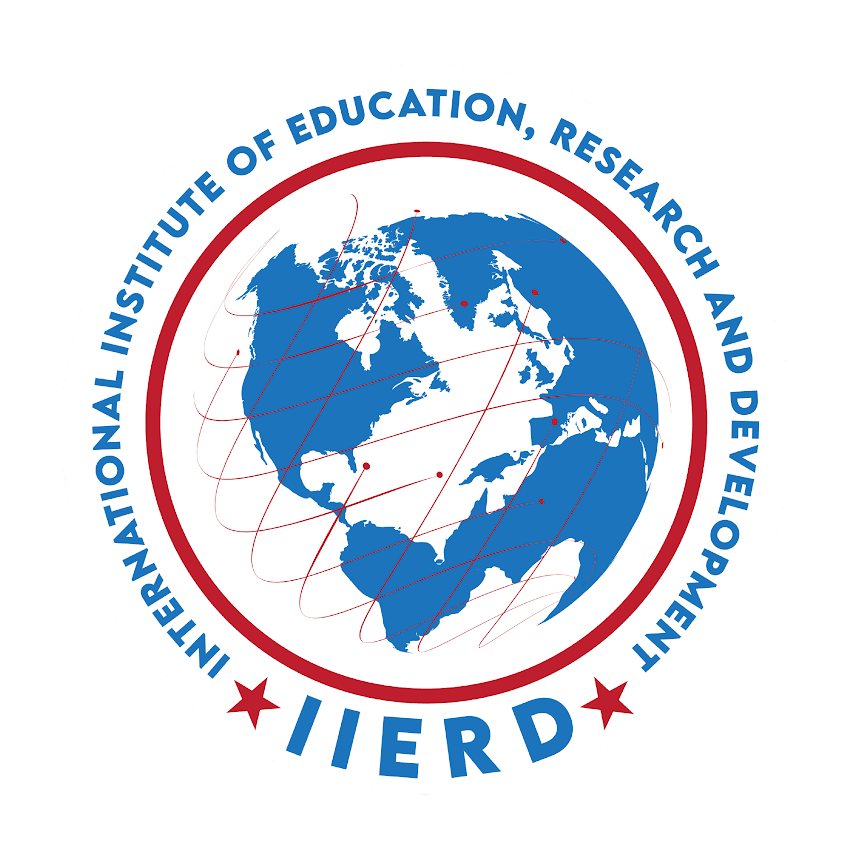
Hybrid Conference (In Person / Virtual)
( - )1st January'1970, ,
Plagiarism Policy and Ethics
Plagiarism is when the authors intentionally or knowingly copy work from others without mentioning the appropriate references.
Plagiarism Issues Before Publishing
The International Institute of Education, Research and Development (IIERD) is responsible for judging the limits of various types of plagiarism in any paper. The detection of plagiarism by the editorial board member, reviewer, editor etc., can be ruled out at any stage of the article process. For example, it may be before or after approval, during editing or at a page proof step
In this scenario, the author will be alerted about the plagiarism and asked to rewrite the content or cite the references from where the content has been taken. After a thorough evaluation, if the paper has more than 25% plagiarism, the article will be rejected, and the same will be conveyed to the author.
When is Plagiarism Check Done? All the submitted research papers, abstracts or journals for publication are evaluated for plagiarism before starting the review.
Handling Plagiarism?
Handling of plagiarism is done after evaluating the degree and extent of plagiarism. Some of the common extents and its post steps are:
- < 5% Plagiarism: In this case, the article will be given an ID and sent to the author for editing the content which has plagiarism
- 5- 30% Plagiarism: In this case, the article will not get an ID and will be sent back to the author for content revision
- > 30% Plagiarism: The manuscript will be rejected without any review in this scenario. The authors will be alerted and asked to revise and resubmit it.
Why are Manuscripts With >30% Plagiarism Rejected?
A submission with more than 30% plagiarism is rejected because it is generally observed that the authors don't alter the manuscript and submit the revised version. However, the writer is more than welcome to edit, research, rewrite again, and initiate a new submission.
What if Plagiarism Detected after the Publication
In some rare scenarios, if plagiarism issues are detected after the publication, the journals will go for an investigation. Also, the journal editorial office will contact the author's university and funding bodies. Furthermore, there will be a clear marking of the plagiarism issues on every PDF paper. Also, the paper can be formally rejected depending on the degree of plagiarism
Originality
The originality of any manuscript is the most important factor of consideration. By submitting the paper, it's generally implied that its original work is unpublished and not in consideration elsewhere
Content having plagiarism and non-citation is not considered by the journal. The plagiarism rule is very strict and must be ruled out at the initial stages to avoid further complications. There are very capable anti-plagiarism software which check the content for duplication with millions of searches
Moreover, the act of plagiarism fakes ideas, mentions, and other innovative presentations as one's own. Therefore, it is also a representation of the violation of copyright law
It can be present in various forms:
- Copying the content from other sources which have similar topics as yours. The writer uses a full or portion of the research in their content.
- Using the inferences, findings, figures, tables, equations, illustrations and experiments mentioned by others in their research. Also, mention of exact sentences which are used by others
- Use of similar text which is downloaded from the internet.
- Downloading and using the content's figures, photographs, pictures or diagrams without giving credits.
Acknowledging Author(s) Sources
Self-plagiarism is a unique case of verbatim or near-verbatim reuse of the related parts of one's copyrighted work without citing the source. These mentions should be well cited even if they indicate your prior published content.
Note: Self-plagiarism does not involve publications based on the author's previously copyrighted work (e.g., appearing in conference proceedings) where a direct connection is made to the previous publication.
Accidental or Unintentional Plagiarism
There are some cases in which the author is unaware of writing plagiarised content. They must have knowledge of quoting and paraphrasing as well as a formal way of citation. You can use quotes, citations and paraphrasing to avoid exact sentences. This knowledge can be attained through revision and the help of peers, seniors and reviewers.
Report Plagiarism
The editorial and reviewing team has taken the responsibility of assessing the plagiarism. They will address the issue with all the authors and ask for a resubmission. But, if plagiarism is found in published manuscripts/papers of the International Journal of Development Research, it's the duty of the original contributor to report it to the concerned authorities.
In this situation, the cases will be sent for revaluation and alert the author to make revisions. We will immediately remove the research from the web until the next submission, which is plagiarism free. So, follow these guidelines and deal with plagiarism in the initial steps to avoid further complications.
Please report the plagiarism cases at E-mail id: info@iierd.org along with the details
 Home
Home
















